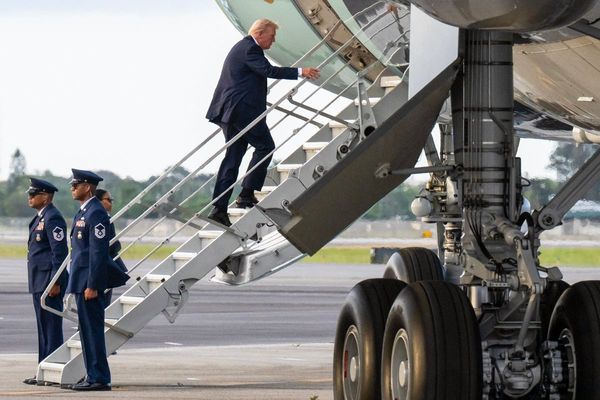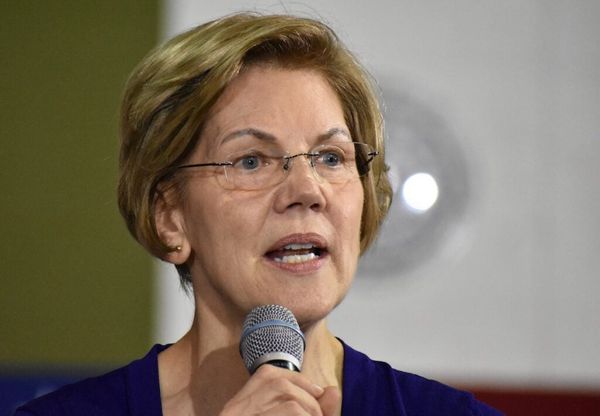
Mathew Burt has been principal at Broome Senior High School for less than a decade, yet he’s one of the longest-serving school leaders across the Kimberley.
After spending most of his teaching career in Perth, Burt decided to make the tree change north in 2018 with his wife and two children. He said teacher shortages have hit all of Western Australia but, the more regional you go, the worse the crisis gets.
“You go to some metropolitan areas where you see teachers and principals that are in schools for 15 years or more,” he said. “When you’ve got principals changing over every few months like in some regional or remote areas, it’s just an unknown and the trust and the confidence of the community in that school drops as a result.”
Sign up: AU Breaking News email
Australia’s teacher shortages are among the worst in the world, an international report has found, and disadvantaged and remote schools are suffering the most.
The OECD Teaching and Learning International Survey (Talis), released this month, found four in 10 (42%) lower secondary principals in Australia agreed that a shortage of teachers in their school hindered the quality of instruction, almost double the OECD average of 23% and up from 14% in 2018.
Australia also recorded the largest shortage of staff in regional schools (63%) and in disadvantaged schools (67%), which are defined as having more than 30% of students from socioeconomically struggling homes.
The convener of Save Our Schools, Trevor Cobbold, said the report demonstrates that Australia is facing a “diabolical staffing crisis”.
“The increased shortage restricts learning in schools, especially in disadvantaged public schools,” he said. “It is a major obstacle to reducing the large achievement gaps between rich and poor.”
Australian teachers are working an average of 46.5 hours per week, the report found, well above the OECD average of 40.8 hours, with almost two-thirds experiencing high stress (65%) and 80% saying their job negatively affects their mental health.
The results echoed a UNSW study released in August which found teachers experienced depression, anxiety and stress at three times the national norm, closely linked to their workload.
According to the Australian Institute for Teaching and School Leadership, about 30% of teachers are considering leaving the profession before retirement age. In WA alone, 1,279 teachers resigned in 2024-25, Department of Education figures showed, the highest number since data began being published in 2005.
The president of the Australian Education Union, Correna Haythorpe, said the scale of the problem is “unacceptable for a wealthy, developed nation”.
She said shortages began to escalate three years ago, as Australia emerged from the pandemic and prospective teachers reconsidered entering the profession, while others reconsidered how long they would stay. She says the source of the crisis has been brewing for some time.
“We’ve had a public education system which has been so starved of resources … that teachers carry that burden because you don’t want to let any child down.”
A report by the Australian Primary Principals Association, released last month, canvassed principals at schools that had lost specialist subjects such as music, languages and arts, support for students with disabilities, and suffered from attendance dips as a result of teacher shortages.
“Every day starts with a spreadsheet of who’s absent and ends with wondering how much longer we can keep this up,” a regional principal said in the report.
At the end of 2022, education ministers agreed to a National Teacher Workforce Action Plan to address shortages, focusing on supply, education, elevating the profession and retainment. Since then, there has been a 7% increase in annual applications to teaching degrees and changes to teacher training have been announced.
Individual states have also experienced some wins. In New South Wales, for instance, public school vacancies have dropped by 61% in three years, with 962 unfilled teaching positions in term three of 2025 compared with 2,460 at the same time in 2022.
The shift was largely attributed to a pay deal secured by teachers in 2023 to become among the highest remunerated in the country, and dedicated recruitment officers at every school.
Haythorpe praised what was occurring at the beginning of the pipeline but said funding is “just as critically important”.
“It should be used to address escalating workloads, to make sure we’ve got more educational support personnel so that we can alleviate burden from teachers and give them time to teach in the classroom,” she said.
Burt also acknowledged minor wins, including incentives in WA for student teachers to complete placements in regional schools, but he said that does not help with continuity, which not only affects student performance but also community cohesion.
Burt’s daughter has recently started a teaching degree and is benefiting from government scholarships and paid practical placements. Her career trajectory is likely to be very different from her father’s.
“When I first came into teaching I pretty much had to go to a country area for my first posting,” he said. “My daughter will walk into a job at any one of those primary schools in the metropolitan area where she lives.
“We need a whole of country approach to this issue because, right now, we’re just pinching [teachers] from each other. The schools that are less desirable are ending up with worse shortages and we’re creating more of a problem.”







